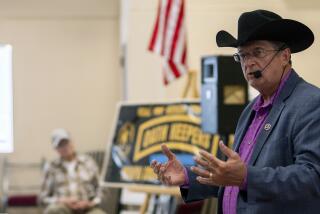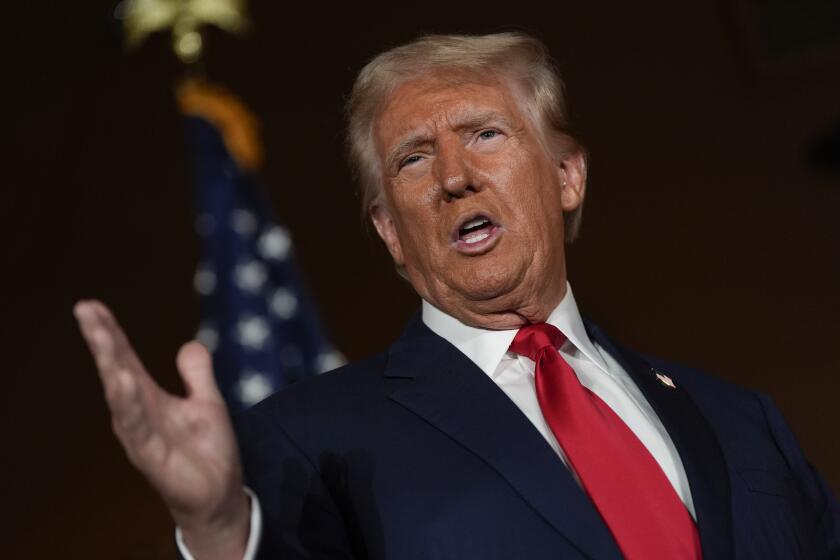White House unveils strategy against HIV/AIDS
The White House unveiled a new national strategy to combat HIV/AIDS on Monday, some three decades after the emergence of the deadly disease.
“Our country is at a crossroads,” President Obama said in a letter introducing the report. “Right now, we are experiencing a domestic epidemic that demands a renewed commitment, increased public attention and leadership.”
The president, who is to speak about his plan at the White House on Tuesday, pledged to slow infections, increase access to care and address persistent disparities in the experiences of different groups infected with HIV — an estimated 1.1 million Americans.
His strategy includes no additional money, however, which activists and healthcare experts warn could undermine its effectiveness.
Obama’s strategy includes broad goals as well as dozens of directives for the Centers for Disease Control and Prevention, the Agency for Healthcare Research and Quality, and other federal agencies. Those steps include developing standards to evaluate care, investigating community programs to see whether they’re effective and simplifying grant applications.
The Bureau of Prisons would expand HIV screening of inmates, and the Justice Department would fast-track investigations of discrimination involving those with HIV.
Those steps would be in place by the end of next year or sooner.
By 2015, the report envisions:
•Lowering the annual number of new HIV infections by 25% to 42,225, from about 56,300.
•Increasing the percentage of infected people who know their condition to 90%, from 79%.
•Increasing the proportion of people newly diagnosed with the disease who get clinical care within three months to 85% (or 35,078), from 65% today (or 26,824).
The report warns about the need for more attention on gay and bisexual men, who account for more than half of new infections annually, and on African Americans.
“To me, these are the most important issues to address today,” said Dr. Michael Saag, an infectious disease specialist at the University of Alabama at Birmingham School of Medicine and chairman of the HIV Medical Assn.
“There are a large number of people in the United States who are infected with HIV and don’t know it.... The tragedy right now is that we don’t have the opportunity to treat a lot of people who have never been tested,” he said.
Those people represent one of the main sources of the disease’s spread.
The report comes as the country has made major medical strides in controlling the disease, enabling many people with HIV to live relatively normal lives. But the drugs they require all their lives can cost thousands of dollars a year.
Activists and healthcare experts fear that with new infections exceeding 50,000 a year, there may not be enough money to help provide all patients with the drugs they need.
Several states have made deep cuts in their drug assistance programs for people with HIV, leading to waiting lists.
Last week, the Department of Health and Human Services announced an allocation of $25 million to help states in need, although some activists say that is woefully inadequate.
But the president’s strategy contains no additional federal spending.
That drew pointed criticism from Michael Weinstein, who heads the Los Angeles-based AIDS Healthcare Foundation, a leading provider of medical care to those with HIV/AIDS.
“It’s really shocking,” Weinstein said. “We have thousands people on a waiting list for AIDS drugs. So, the whole premise is that we are going to test more and treat more. But we don’t have the capacity. Why should anyone be tested if they don’t have access to medications?”
Weinstein called the $25-million commitment the equivalent of “a rounding error.”
Washington spends more than $19 billion on domestic programs targeting HIV/AIDS, up from nearly $16 billion five years ago, according to data analyzed by the nonprofit Kaiser Family Foundation.
The nation spends an additional $6.5 billion supporting efforts to control the disease globally, more than double the total from 2006. That reflects in part efforts by the George W. Bush administration to step up global aid.
Despite the lack of money in Obama’s plan, David Munar, vice president of the AIDS Foundation of Chicago, praised it as a potentially “seminal moment” in the country’s efforts to combat HIV/AIDS.
“This is really the first comprehensive plan developed by the United States,” he said. “Now, the real work begins.”
More to Read
Sign up for Essential California
The most important California stories and recommendations in your inbox every morning.
You may occasionally receive promotional content from the Los Angeles Times.











